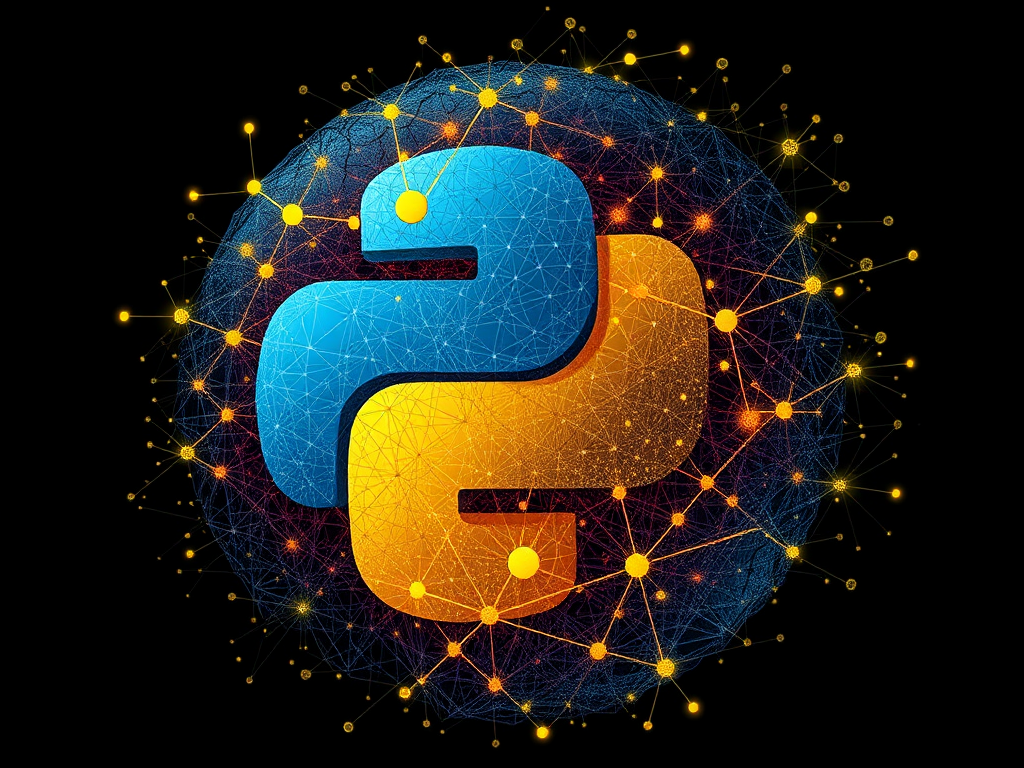Hello, dear Python enthusiasts! Today, let's talk about Python's third-party libraries. This is an important topic that every Python developer should be familiar with. Python's power lies not only in its concise and elegant syntax but also in its rich and diverse ecosystem of third-party libraries. These libraries are like adding various powerful equipment to your Python arsenal, making you invincible in the world of programming. So, let's dive deep into this exciting world together!
Family Portrait
First, let's take a look at the "family portrait" of Python third-party libraries. These libraries cover various aspects from web development to data science, from system interaction to text processing. We can categorize them into several main groups:
- Web development libraries
- Data science libraries
- System interaction libraries
- Text processing libraries
- Time and unique identifier libraries
Each category has its unique functions and application scenarios. Next, let's get to know these "family members"!
Web Superstars
In the field of web development, Python has several "superstar" level libraries. They are Django, Flask, and FastAPI.
Django is an all-rounder, like an experienced big brother. It provides a complete solution from database operations to user authentication. If you want to develop a large-scale website with complex functions, Django is definitely your top choice.
Flask is more like a flexible little brother. It's lightweight and easy to get started with, very suitable for developing small applications or APIs. You can add features step by step as needed, just like building with blocks.
FastAPI is the newcomer in the family, but its capabilities are not to be underestimated. It focuses on API development, has excellent performance, and can automatically generate API documentation, which is a blessing for developers!
Did you know? According to JetBrains' 2022 Python Developers Survey, Django and Flask rank first and second among web frameworks with usage rates of 39% and 38% respectively. Although FastAPI is a rising star, its usage rate has already reached 15%, showing an impressive growth rate.
Data Experts
When it comes to data processing, we can't ignore the three brothers: NumPy, Pandas, and Matplotlib.
NumPy is like the cornerstone of the data processing world, providing high-performance multidimensional array objects and various mathematical functions. You can think of it as a super calculator that can quickly process large amounts of data.
Pandas is a powerful assistant for data analysis. It provides a powerful DataFrame structure that allows you to easily handle various structured data. With Pandas, you can manipulate data as easily as operating a spreadsheet!
Matplotlib is a master in visualization. Whether it's a simple line chart or a complex 3D graph, it can handle it easily. With Matplotlib, you can turn boring data into vivid and interesting charts, making data "speak".
According to statistics from the Python Software Foundation, these three libraries have monthly downloads in the millions. Among them, NumPy has over 30 million monthly downloads, Pandas over 25 million, and Matplotlib has reached 15 million. These numbers fully demonstrate their important position in the field of data science.
System Helpers
When dealing with the operating system, the os and sys libraries are your good helpers.
The os library is like a translator between you and the operating system. Through it, you can perform various system operations, such as creating folders, deleting files, etc. Whether you're working on Windows, Mac, or Linux, the os library can help you handle it easily.
The sys library is more like the housekeeper of the Python interpreter. It allows you to access various parameters and functions of the Python interpreter. For example, you can get command-line arguments through sys.argv, and view the module search path through sys.path.
Although these two libraries may seem insignificant, their importance is self-evident. Almost every Python program will use them directly or indirectly. Can you imagine how we would interact with the operating system and Python interpreter without these two libraries?
Text Processing Masters
When processing text data, the re, json, and csv libraries are indispensable.
The re library is an expert in regular expressions. It can help you search for specific patterns in text and perform complex string operations. Although regular expressions may look a bit scary, once you master it, you can easily handle various text processing tasks.
The json library is a good friend of JSON data. In this era of API prevalence, JSON has become a universal format for data exchange. With the json library, you can easily convert between Python objects and JSON strings.
The csv library is skilled at handling CSV files. CSV is a common data storage format, especially in the field of data analysis. Using the csv library, you can easily read and write CSV files, as simple as operating Python lists.
These three libraries are used very frequently. According to statistics from the Python Package Index (PyPI), the json and csv modules have daily downloads in the millions. Although the re module doesn't have separate download statistics as a built-in module, its importance in text processing is undeniable.
Time Manager
When dealing with time-related tasks, the datetime library is your capable assistant.
The datetime library provides various classes and methods for handling dates and times. Whether it's getting the current time or performing complex time calculations, the datetime library can handle it easily. You can use it to calculate the difference between two dates or format time display.
For example, you can get the current time like this:
from datetime import datetime
now = datetime.now()
print(f"It's now {now.year} year {now.month} month {now.day} day {now.hour} hour {now.minute} minute {now.second} second")
Isn't it convenient?
In addition, the uuid library is also a very useful tool. It can generate globally unique identifiers, which is very useful in scenarios that require unique IDs, such as database primary keys, unique identifiers in distributed systems, etc.
Using the uuid library to generate unique identifiers is very simple:
import uuid
unique_id = uuid.uuid4()
print(f"The generated unique identifier is: {unique_id}")
Each time you run this code, you'll get a different unique identifier.
Although the datetime and uuid libraries may seem insignificant, their applications in actual development are very widespread. Almost every project that needs to handle time or generate unique identifiers will use them.
The Way of Choice
Faced with so many third-party libraries, you might feel a bit overwhelmed. But don't worry, choosing the right library is not difficult as long as you master the correct method.
First, you need to clarify your needs. Are you developing a web application or a data analysis program? Are you dealing with structured data or unstructured data? Once you've clarified your needs, you can roughly determine which type of library you need.
Second, you need to consider whether the library's functionality meets your needs. For example, if you need to develop a complex web application, Django might be more suitable than Flask.
Then, you also need to consider the performance of the library. If you're dealing with a large amount of data, high-performance libraries like NumPy and Pandas are the best choice.
Ease of use is also an important factor to consider. A good library should have clear APIs and comprehensive documentation. You can first look at the library's official documentation, and if you find it easy to understand, that's a good sign.
Community activity is also important. An active community means you can more easily find solutions to problems, and the library itself will be continuously updated and improved. You can check the GitHub repository of the library to see the activity level of issues and pull requests.
Finally, don't forget to consider the maintenance status of the library. A library that hasn't been updated for a long time may have security risks or compatibility issues. You can check the last update time and version release frequency of the library to judge.
For example, let's look at Django's GitHub repository. As of October 2023, Django has over 68,000 stars and over 26,000 forks. The most recent commit was just a few days ago, and there are new issues and pull requests every day. These data all indicate that Django is a very active and popular project.
Continuous Learning
Python's ecosystem is constantly evolving, with new libraries and tools constantly emerging. As a Python developer, it's very important to maintain enthusiasm and curiosity for learning.
You can regularly follow some Python-related websites and blogs, such as Python.org, Real Python, Planet Python, etc. These websites often introduce new libraries and technology trends.
Attending Python-related conferences and online events is also a good idea. For example, PyCon is a very good platform for learning and communication. Here, you can hear Python experts from all over the world share their experiences and insights.
In addition, GitHub's trending page is also a good place to learn about emerging libraries. You can regularly check the trending projects under the Python category to see what new and interesting libraries have appeared.
Most importantly, write more code! Only in practice can you truly understand and master the use of these libraries. Don't be afraid to try new libraries, you might discover a treasure trove library that greatly improves your work efficiency!
Conclusion
Well, our journey through Python's third-party libraries ends here. Do you have a better sense of Python's power now? These libraries are like adding various powerful equipment to your Python arsenal, making you invincible in the world of programming.
Remember, choosing the right library can make your development twice as efficient with half the effort. But at the same time, don't over-rely on libraries. Understanding how libraries work and mastering core Python knowledge will allow you to handle problems with ease.
Finally, I want to say that the world of Python is so vast and wonderful. There's a story behind every library, each crystallizing the wisdom and creativity of developers. When you use these libraries, you're not just writing code, but participating in this great open-source community. So, let's continue to explore, continue to learn, and let the charm of Python bloom at our fingertips!
Which library are you most interested in? Have you used these libraries in actual projects? Feel free to share your experiences and thoughts in the comments section. Let's communicate and grow together!




 Previous
Previous 





